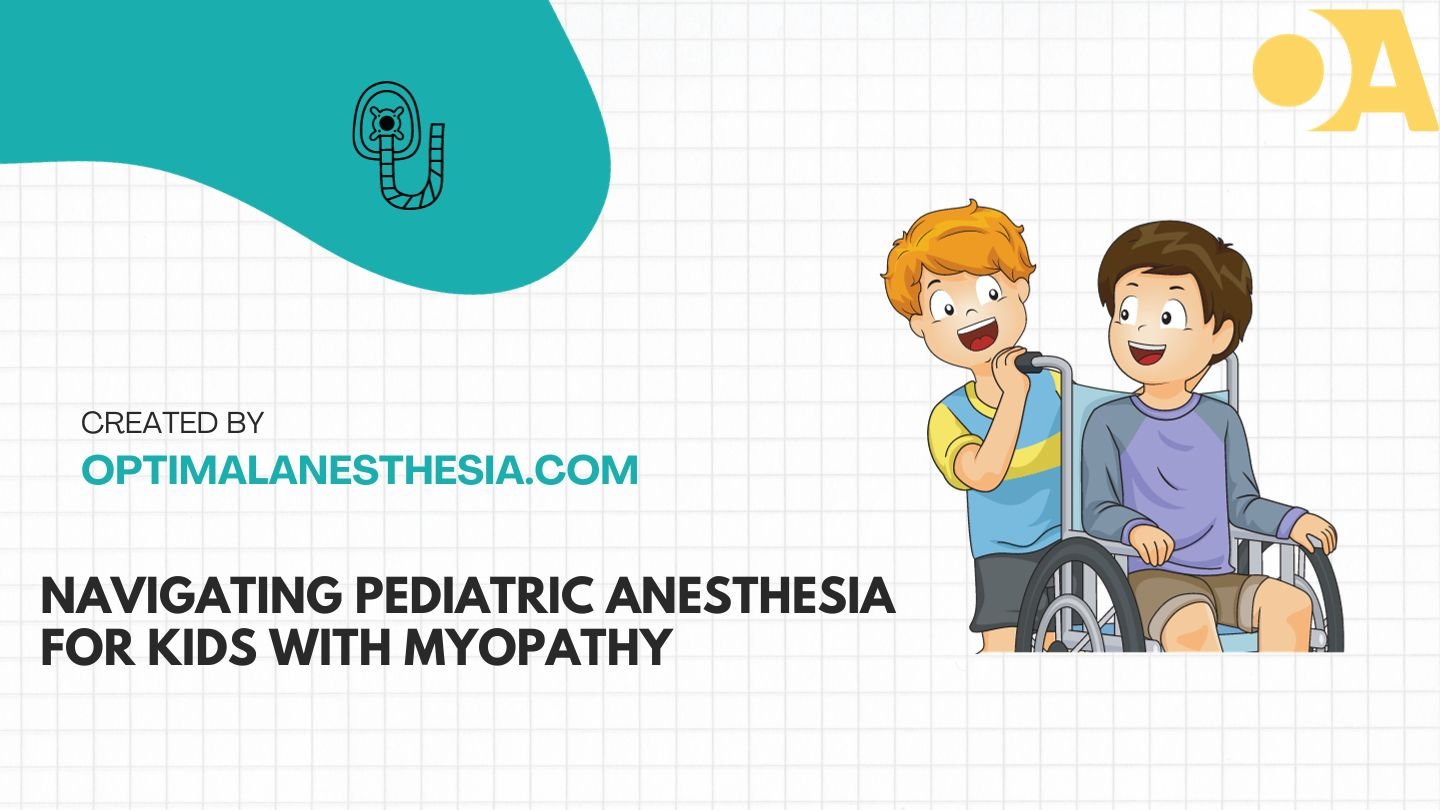Introduction:
Children with myopathy, a group of muscle disorders, require specialized anesthesia care to ensure their safety during surgical and diagnostic procedures. This article delves into various aspects of anesthesia, including monitoring, choice of anesthetic agents, and specific considerations for managing myopathy-related risks.
Monitoring During Anesthesia:
- Standard Monitors: Every anesthesia procedure mandates the use of standard monitoring equipment to track vital signs and overall patient well-being.
- Advanced Monitoring: Depending on the surgical procedure, expected blood loss, and comorbidities, advanced monitoring tools like invasive arterial blood pressure measurement, transesophageal echocardiography, and central venous catheterization may be employed.
- Brain Monitoring: A processed electroencephalogram monitor can be utilized to guide the administration of intravenous anesthetics, particularly to prevent accidental awareness during general anesthesia.
Choice of Anesthetic Agents:
- Risk Assessment: Children with myopathies are at risk of malignant hyperthermia (MH), anesthesia-induced rhabdomyolysis (AIR), or the propofol infusion-like syndrome.
- Patient-Specific Anesthetic Selection: The choice of anesthetic agents should be based on individual patient risks, taking into account the specific myopathy diagnosis and patient comorbidities, especially cardiac status.
- Sensitivity to Anesthetic Agents: Children with myopathy exhibit heightened sensitivity to anesthetic agents, sedatives, and opioids, necessitating dose reductions and titration to effect.
Malignant Hyperthermia and Myopathy:
- Associations with Malignant Hyperthermia (MHS): The susceptibility to MHS varies among different muscle diseases based on the underlying genetic defect. The presence of MHS depends on the specific diagnosis and genetic defect.
Anesthesia-Induced Rhabdomyolysis (AIR) and Myopathy:
- Pathogenesis: AIR is characterized by skeletal muscle breakdown, releasing myoglobin and causing elevated serum creatine kinase (CK). It occurs due to muscle contraction in the presence of an unstable sarcolemma.
- Incidence: The exact incidence of AIR in patients with myopathy is unknown, but it is commonly associated with Duchenne muscular dystrophy (DMD) and Becker muscular dystrophy (BMD).
- Choice of Anesthetic Agents: Succinylcholine is contraindicated for patients with MD due to the risk of acute rhabdomyolysis and hyperkalemia. The use of halogenated anesthetics, although not universally contraindicated, should be avoided, especially for induction of anesthesia, to minimize the risk of AIR.
- Management of AIR: In the event of suspected intraoperative AIR, volatile anesthetics should be discontinued. Treatment includes cardiorespiratory support, correction of hyperkalemia, and volume resuscitation. It is essential to monitor patients in an intensive care unit until stable.
Propofol and Myopathies:
- Mitochondrial Disorders: Children with mitochondrial disorders may be more susceptible to adverse cardiac and metabolic effects of propofol.
- Propofol Infusion Syndrome (PRIS): PRIS can occur with high cumulative doses of propofol, potentially leading to cardiac arrest, severe metabolic acidosis, and rhabdomyolysis.
- Precautions: A safe threshold for propofol administration in children with mitochondrial disease cannot be predicted, so it is generally recommended to avoid propofol for total IV anesthesia or prolonged sedation in these patients.
Airway Management and Neuromuscular Blocking Agents:
- Airway Management: Specific guidelines for airway management in pediatric anesthesia and managing the difficult airway should be followed.
- Neuromuscular Blocking Agents: Succinylcholine is contraindicated in all patients with myopathies due to its potential to induce life-threatening hyperkalemia. Alternatives and considerations for nondepolarizing neuromuscular blocking agents are discussed separately.
Opioid Sparing Analgesia, Positioning, and Hypothermia Prevention:
- Analgesia Strategy: A multimodal opioid-sparing strategy is recommended, which may include nonopioid analgesics, regional anesthesia, or analgesia techniques to reduce or eliminate the need for opioids.
- Positioning: Patients with contractures due to myopathy require careful positioning during surgery to avoid pressure points, nerve, skin, or tissue injuries.
- Hypothermia Prevention: Patients with myopathy are at an increased risk of hypothermia, necessitating active warming and temperature monitoring during procedures.
Emergence and Extubation:
- Delayed Extubation: In patients with poor preoperative respiratory function or specific comorbidities, a low threshold to delay extubation is recommended to prevent complications and improve postoperative outcomes.
Conclusion:
Anesthesia for children with myopathy is a specialized field requiring a careful balance of monitoring, medication selection, and procedural considerations. Careful assessment and tailored approaches are crucial to minimize risks and ensure the safety and well-being of these young patients during surgery and other medical interventions.


